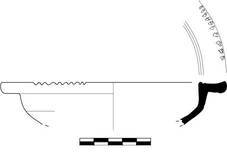 As I've mentioned before, Billur Tekkök and I are editing the digital publication Greek, Roman and Byzantine Pottery at Ilion (Troia). I'll talk about our work as part of the AIA panel "Web-Based Research Tools for Mediterranean Archaeology".
As I've mentioned before, Billur Tekkök and I are editing the digital publication Greek, Roman and Byzantine Pottery at Ilion (Troia). I'll talk about our work as part of the AIA panel "Web-Based Research Tools for Mediterranean Archaeology".One point that I will stress is that we intend to deliver this information in whatever formats will be useful to users. Currently, this means the website, a PDF file released under a Creative Commons license, and as a bound volume available for purchase from Lulu.com. It's pretty trivial to generate the PDF - which we produce so that users can take all our content into the field - and then upload it to Lulu, after which third parties can purchase a printed copy.
That last "format" brings me to the title of the post. Don't buy the bound version yet. I'm going to update it at least once before going to Chicago and, looking further out, our goal is to expand the content in time for the summer field season. This is all to say that the whole thing is a draft so there's no point in spending real money when you can get all the text and images for free.
If that's the case, why are we producing a bound version at all? At some point we'll freeze a first edition and submit it for review and encourage libraries to purchase it. There's still a role for a printed volume as an archival format and there are still times when it's convenient to have information available on the printed page; like when it's over 37 Celsius and you don't want to bring your computer outside into the heat and dust.
Information when you want it and how you want it is the model we're pursuing, even if that means using such old-school technologies as the printed book.
And one reason to buy now... if you'd like to see the quality of Lulu volumes. In general, I can say that the paper quality is good, text is sharp, but the image reproduction is only decent, though I think I can tweak the process to make the images more faithful to their original colors and quality.




